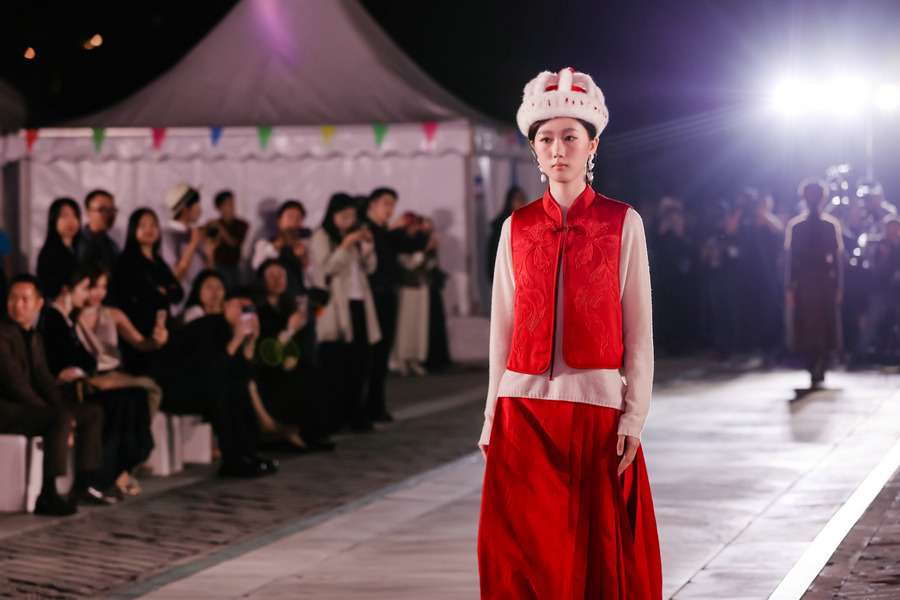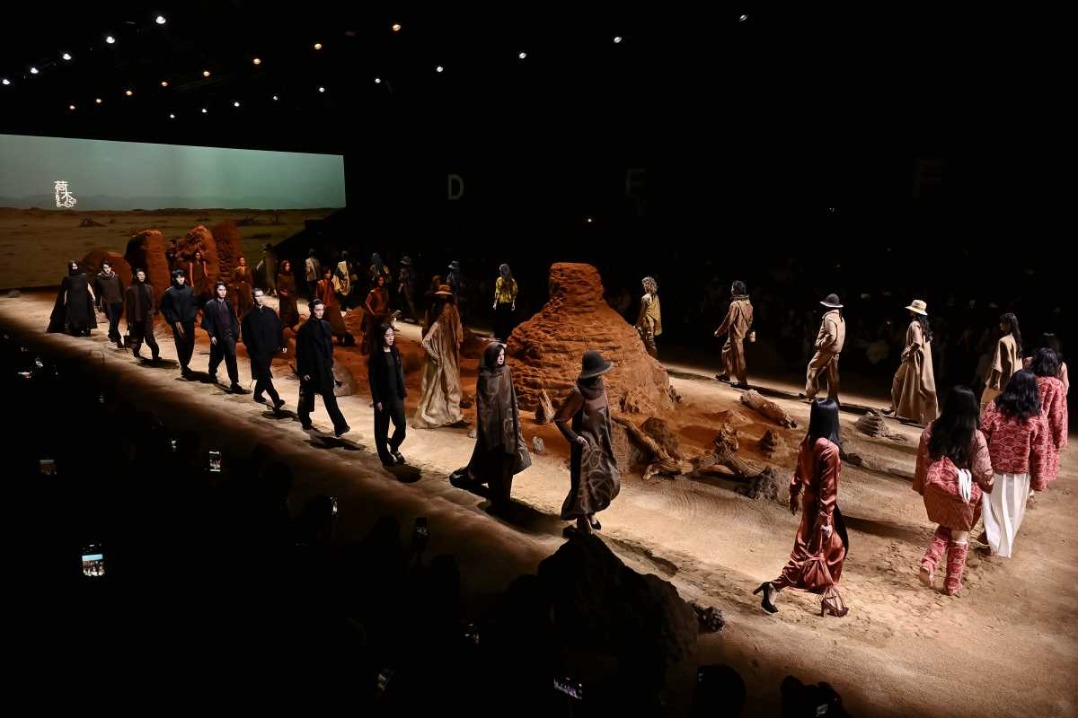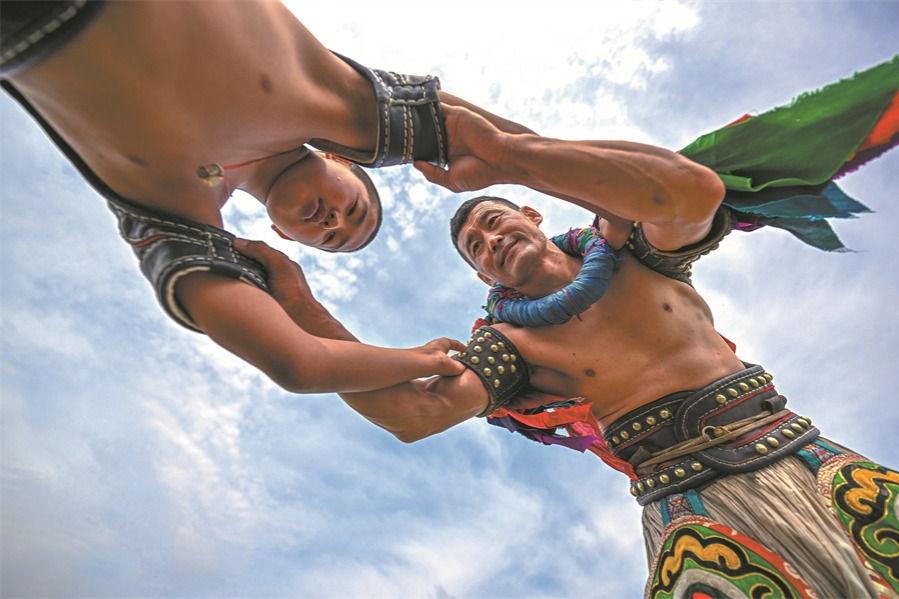Dancing for joy after life-changing reform


It was a freezing, moonless night on Tibetan New Year's Eve in 1954 when 7-year-old Tseyang sat on her father's shoulders on a muddy path in Shigatse of the Xizang autonomous region.
Hours earlier, the family of three had performed tirelessly for a feudal lord's banquet. Her mother's voice was hoarse from singing, her father's fingers were stiff from strumming, and her own small feet were sore from the endless pounding of the dance.
"The lords cared only about their eating, drinking and pleasure," she said. "They never thought about how hungry, tired and cold we were. From morning until deep into the night, they only provided us one meal."
As they made their way home, weighed down by exhaustion and their instruments including yangqin (a hammered dulcimer) and dramyen (a traditional Tibetan six-string instrument), the family fell into a deep sewage pit hidden in the dark.
"My father held me above the water so I only got a little wet," Tseyang recalled. "But he and my mother were soaked to the skin. They kept slipping, climbing and falling back, again and again, until they finally pulled us out."
For Tseyang, that night remains etched in her memory as a symbol of the bitterness of old Xizang, where artists like her family danced not for joy, but for survival.
Born in 1947 into a family of Tibetan folk performers, Tseyang's earliest memories are of festivals and feasts where her parents sang and played for the "three major lords".
Made up of local officials, aristocrats, and high-ranking lamas in the monasteries, the "three major lords "and their agents accounted for less than 5 percent of Xizang's population by the late 1950s. Yet they controlled nearly all of the region's wealth, while about 95 percent of the people lived as serfs and slaves, struggling simply to survive.
"We always danced from dawn to midnight," she said. "If we stopped for even a moment, the lords scolded us."
A new beginning
Things began to change when the sweeping democratic reform launched in 1959 freed a million serfs and slaves.
It was the most profound social transformation in Xizang's history featuring the abolition of feudal serfdom of theocracy and the establishment of a socialist system: The people in Xizang stood up and came into their own.
For Tseyang's family, the change was life-altering. No longer servants to the lords, her parents joined an art troupe in Shigatse.
In 1956, at just 9 years old, Tseyang traveled to Beijing with her parents after spending days on the road to perform at the country's First National Music Festival.
"I wasn't afraid or nervous," she recalled. "My father played, my mother sang and I danced. It felt like our whole family's history was there on that stage."
From 1957 to 1960, her parents taught Tibetan folk songs and dances at the Beijing Dance Academy and Minzu University of China, mentoring young talents, including Tseten Dolma, who would later become one of China's most celebrated Tibetan singers.
"My parents never took a penny from their students," she said. "They even gave money to those who struggled. Their students are everywhere now. That was a legacy left by them."
In a sense, Tseyang was also a student of her own parents. By the age of 6, she was already learning Duixie, an ancient Tibetan dance of rhythmic kicks and taps. As she grew older, whenever she heard its music, she could reproduce the dance true to its form.
"Dance has been part of me ever since," she said. "It is in my bones."
However, Tseyang did not get the chance to dance purely out of passion until after her retirement from Xizang Bureau of Geology and Mineral Resources in 1999. Then she and a group of retirees living in a residential community called Bayi in Lhasa, the regional capital, came together for the first time to form a community art troupe.
With no funding, they pooled money for costumes, makeup and old cassette tapes by themselves. "We were all retired workers, older in age and not in the best health," she said. "But everyone showed up on time for rehearsals and performances. That spirit was truly precious."
Over the years, the troupe has grown and it now has 20 members. Their performances have become a fixture of local festivals and gatherings. Children clap, elders smile, and for Tseyang each dance is proof of how far her life — and her homeland — has come.
Two worlds
When she compares her life to her parents', the contrast is stark. "Their lives in the old society were filled with suffering. Mine has been filled with opportunity and dignity," she said.
She believes the difference lies entirely in the change of systems. "I was born in the old society, but I grew up under the leadership of the Communist Party of China. The Party taught me to serve the people wholeheartedly. My parents taught me to be kind. That has been my compass."
During her years with the art troupe, Tseyang choreographed and taught more than a dozen dances for her fellow members. She held them to high standards, insisting that every detail — the hands, feet, head, posture, gaze and expression — had to move in harmony with the rhythm.
"Everyone knows teaching dance is harder than learning it," she said. "Each movement has to be shown again and again until the students truly understand, but I feel it is my responsibility to serve the people by giving full play to my strengths."
A dance of freedom
Today, Tseyang's life is quiet but full. Every Monday, Wednesday and Friday morning, the sound of Tibetan folk music drifts from a modest community hall.
Inside, sunlight filters through the windows as Tseyang stands at the front, her feet stomping to the rhythm, her voice guiding a circle of older men and women who follow her steps.
Most of her students are in their 70s or 80s, yet they still stamp their feet to the beat of Duixie. Their faces shine with delight, their steps loosened by laughter as they savor the joy of life carried in the music.
For Tseyang, who turned 78 last month, these mornings are more than exercise, they are a celebration of survival, of heritage and of freedom. "In the past, we danced for others, for survival," she said, wiping the sweat from her brow with a smile. "Now, we dance for ourselves, for our community, and for our country. Every step is filled with pride."
And as the music swells, Tseyang moves effortlessly with the group — her feet striking the floor with the same rhythm her mother once taught her more than 70 years ago. Only now, each step carries not pain, but joy.
mojingxi@chinadaily.com.cn




































